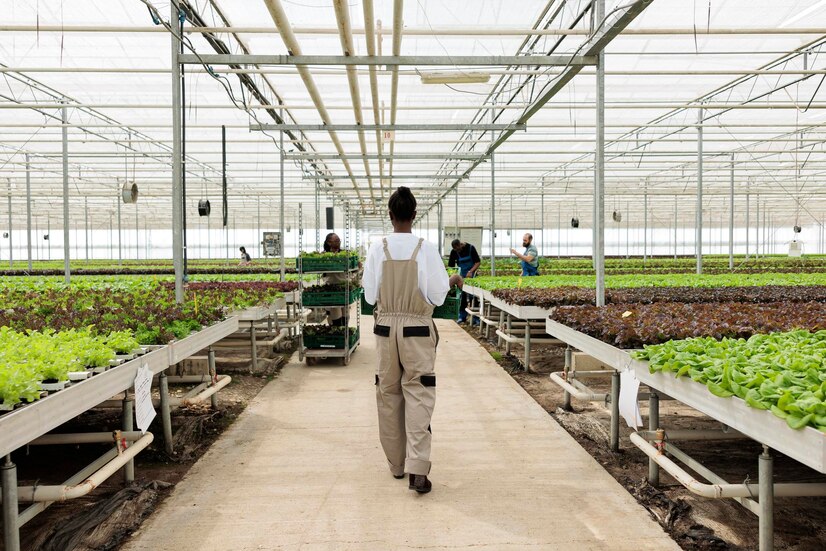As the ever-turning wheels amidst the hustle and bustle of cities turn, and even within the limiting conventions of traditional farming practices, a new revolution begins to take hold of its way: vertical farming. This groundbreaking technique not only grows plants but also completely changes the landscape of agriculture in urban areas, sustainability efforts, and global food security. What is Vertical Farming?
Vertical farming is a means of growing plants in vertically stacked layers or structures, often indoors under totally controlled environments. It virtually takes on the form of cultivating crops in a climate-controlled room, warehouse, or even skyscrapers. This maximizes on the usage of space while minimizing the ecological imprint realized by events of traditional agriculture.
Advantages of Vertical Farming
- Space Efficiency:
Maximizing Urban Space: Since vertical farms do not require huge stretches of arable land, they can fit well within a city environment. This use of vertical space allows integration into city infrastructures and brings food production closer to the consumer.
Scaling Up: Vertical farming supports high scalability. Farms can grow upwards, not outwards, hence supplying growing populations without encroaching on natural habitats.
- Resource Efficiency:
It uses up to 90% less water than conventional farming methods. Hydroponics and aeroponics are methods of growing plants directly in nutrient-rich water or air-mist/directly with no soil, reducing loss of water.
Energy Efficiency: The controlled atmosphere of vertical farming ensures lighting, temperature, and humidity are optimized to enable plants to grow, using lesser amounts of energy as opposed to if they were left to grow outdoors.
- Sustainable Agriculture:
Low Carbon Footprint: Vertical farming reduces most of the gas emissions resulting from food distribution by reducing the distances between farms and tables.
Minimal Pesticide Use: The burden of pesticides and herbicides on the environment due to their usage can be reduced in an enclosed setting in vertical farms, thus荐 healthier and non-chemical produce.
- Year-Round Production:
Climate Control: Vertical farms offer constant growing conditions throughout the year, independent of seasonal weather fluctuations or azure effects of climate change. This thereby ensures freshness in terms of produce supply, irrespective of the conditions outside.
Applications and Innovations
Vertical farming is not an idea but a dynamically emerging industry with versatile applications and continuous innovations happening in this very area.
Urban Agriculture: Bringing farming closer to urban populations to reduce food miles and hence enhance food security within cities. Crop Diversity: Production of leafy green vegetables, herbs, strawberries, tomato plants, etc., in completely controlled environments. Integration of Technology: Advanced technologies are integrated into this way of farming— their usage involves AI, robotics, and the IoT for the automation and optimization of farming processes.
Sustainability Initiatives: Collaborating with architects, engineers, and environmentalists in the designing of sustainable vertical farming structures that will blend seamlessly into any urban landscape.
Challenges and Future Outlook
While vertical farming has exceptionally bright prospects, it is not without challenges in terms of set-up costs, energy requirements, and intricate technology. That said, research and development work is in progress to help iron out these challenges and soon make vertical farming a very workable and economically worthwhile proposition.
The future of agriculture is embracing innovative solutions like vertical farming in the face of urbanization, climate, and global food security challenges. Vertical farming mirrors a prospective way forward to a resilient and thus efficient food system, with consumer behavior increasingly becoming conscious towards sustainability and food provenance.
Embracing the Vertical Farming Revolution
Become a stakeholder in vertical farming projects and take advantage of local products obtained from such sources as well. So, be you the curious urban resident exploring urban sustainability or a farmer in search of new production methods, let your vision for the future of agriculture be one where, in every harvest, innovation marries environmental stewardship.
Let’s create a future where vertical farming has become a reality—producing fresh and sustainable produce within communities while steering us on the path toward a greener, more resilient planet.

